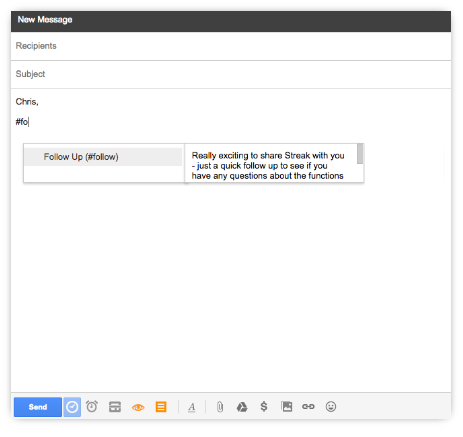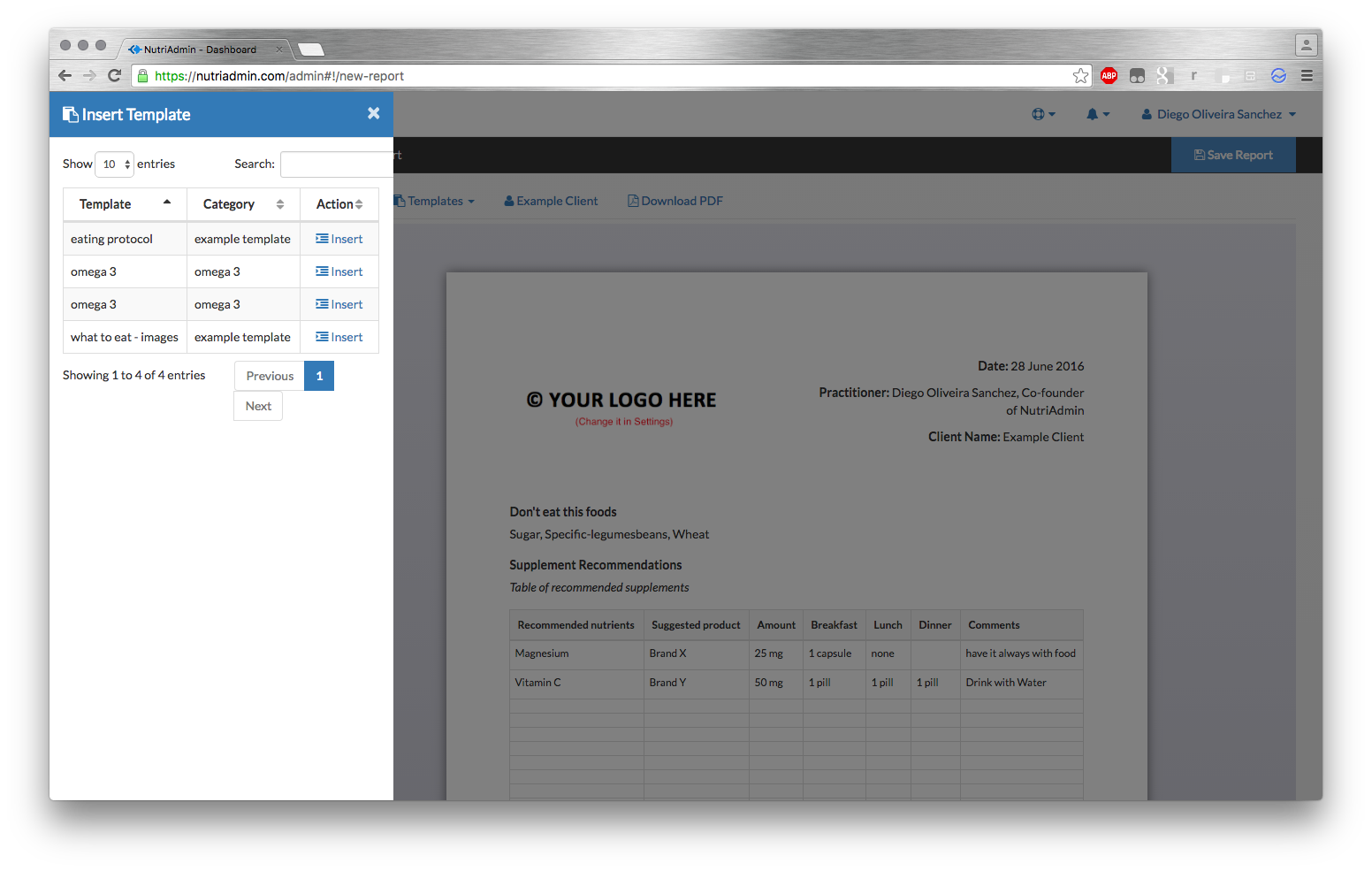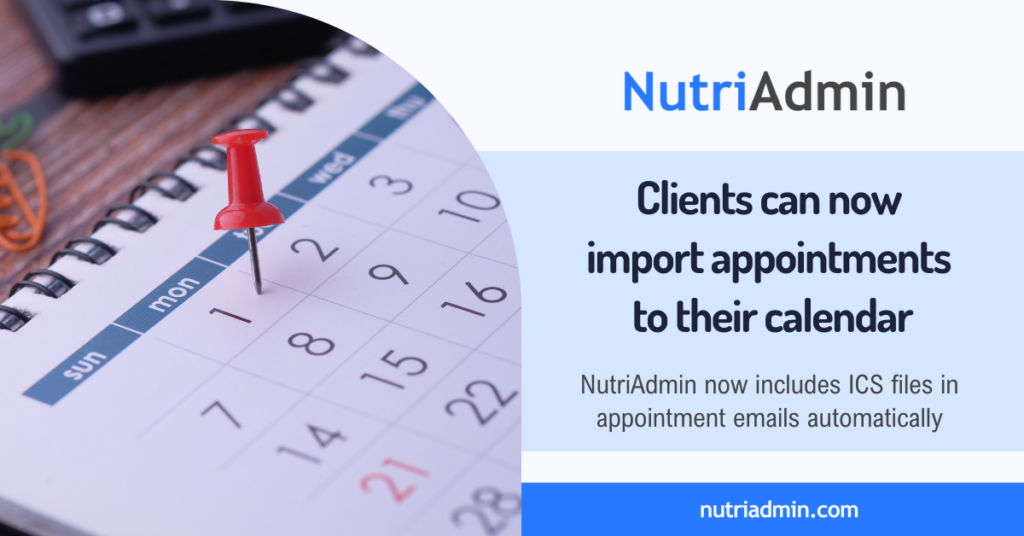Do you follow processes in your practice that allow you to get more done with less effort? Are you taking full advantage of specialised tools, efficient techniques, and new technologies?
We live in a world dominated by increasing technology and sophistication. New advancements allow us to do many things today that would be unthinkable just a few decades ago.
Today’s article will show you a few ways in which you can be more efficient and productive if you are a nutritional therapist or dietitian. Follow these practical suggestions and you will see results fast.
The biggest source of inefficiency
I would argue that the main source of inefficiency in a nutritionist’s profession is repetition.
It’s very likely that there are many repetitive tasks in your practice. Examples may include:
- Writing supplement recommendations to patients
- Writing other types of reports and meal plans
- Setting up consultations via email
- etc
The nature of the job is cyclical: you meet a new patient, then have a consultation, then you study the case and produce recommendations, reports, or meal plan guidelines… Then you repeat the process with a new client.
Every new patient is different. However, it’s likely that the process you follow with them is largely the same: introduction, intake questionnaires, scheduling appointments, assessment, making notes, giving reports, meal plans, and recommendations.
During this process, there will often be many repetitive tasks, like the ones listed above. If you want to be more productive and efficient, you have to automate them or to make them more efficient.
The old and new way of dealing with repetitive work
Before computers and modern technology, repetitive work was done completely by hand. Rewind back 500 years to European monasteries, and you will find armies of scribes manually copying books by hand, letter by letter.
Luckily, today we have at our disposal multiple technologies and techniques to automate and eliminate repetitive work. Our modern jobs have become more creative, and less monotonous.
Let’s explore the art of never writing anything twice in your nutrition practice. This is a philosophy that takes advantage of all the tools we have today, to do less of the repetitive stuff, and more of the human part – that cannot be automated.
Writing more efficient emails
Check your inbox and find messages from your patients, and other work-related contacts. It’s quite certain that a big percentage of emails are different people saying the same thing in essence.
For example, you may have different potential clients asking:
- What can I expect from a consultation with you?
- What are your rates?
- When can you meet?
Different people will phrase their questions differently. However, the answer to many of those will almost always be the same.
You may also need to send repetitive emails regarding:
- Medical questionnaires
- Booking an appointment with a client
- Disclaimers
Instead of writing a reply to common questions from scratch every time, or repeating your content over and over manually; how about writing every answer once – then using it many times.
You could use a free Gmail extension like Streak to save canned replies to common emails. After you create a collection of snippets, you will be able to reply with a click to 80% of your incoming emails. Try it out today!
Using your pre-made replies has many benefits:
- You save loads of time long-term
- You never make mistakes or typos in technical information you send
- It’s much easier to click a button than to improvise a reply every single time
Let’s see how we can extend the philosophy of never writing anything twice further.
Writing high quality reports in seconds
Every client is different and has different needs. Hence, if you write nutrition recommendations for them in the form of a report or meal plan, these will vary from patient to patient.
Let’s look at the problem from a different dimension. Everyone is different, but people share common traits or characteristics. For example, almost everyone that has a Magnesium deficiency will benefit from a supplement or a diet higher in Magnesium-rich foods.
If you have 100 patients over the year to whom you recommend more Magnesium, this particular recommendation will be very similar for all of them. You shouldn’t have to write which products, where to get them, and how to consume them every single time for all of them.
Instead, if you have a saved paragraph of text, table, or similar content explaining in detail how to get more Magnesium in your diet, you could just include this piece of information in your client’s report or meal plan. You write it once, you use it 100 times.
Taking it a step further, you could have hundreds of templates, or snippets of content saved up in a collection containing the most common recommendations you give. Then, you could pick and re-use them for each new patient you meet.
For example, imagine you meet a new client that needs more omega3, needs to cut down on carbs, to exercise more, sleep better, and a higher intake of Vitamin E.
The above are 5 common traits. If you had a paragraph written for each of them, you would be able to put together a completely personalised and high quality recommendations report for your client in 5 seconds.
There are many ways you can go about managing your templates. A simple way would be to keep an Excel spreadsheet with hundreds of paragraphs written with recommendations for your clients, sorted by categories, and including multiple versions if necessary.
For example, you could save a master table with all the supplements you recommend to your clients. Then, you could copy the table and remove all of the supplements that do not apply to your particular patient, leaving just the supplements that are relevant – and saving time.
With an Excel spreadsheet, you could find the content you want by keyword (i.e. Magnesium), then copy/paste relevant chunks of content into your client’s report. This habit alone, done with discipline, would save you countless hours of tedious work over your career.
The only problem with using a master document or spreadsheet with many templates is that it can get messy quickly, it’s harder to keep the right formatting on text, and it’s quite tedious at the beginning. But on the plus side, doing something like this will inevitably make your job easier and more fun in the long-term.
Conclusion
One of the main sources of inefficiency and time-consumption in your practice is writing the same content over and over.
It would be very useful to write pieces of this repetitive and common content only once, then to re-use them all the time.
There are different ways in which you could organise your collections of templates. Streak for gmail, and a simple excel spreadsheet can help.
Finally, if you really want to get serious with efficiency and paperwork reduction, how about you give NutriAdmin a try? The whole software has been designed solely to help nutritionists and dietitians; and the philosophy of never writing anything twice is embedded in emails, reports, and meal plans.

Hope you’ve enjoyed reading this article and that you found some useful ideas to simplify your work and be more efficient.
If you want to receive more articles for nutritionists in your inbox, please consider subscribing in the yellow box below.
To boost your productivity and learn effective strategies, you can check out our article on becoming a productivity machine.
Thanks for reading and have a great day!




